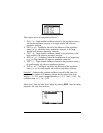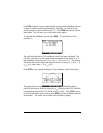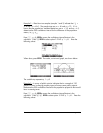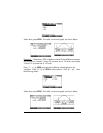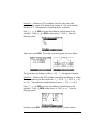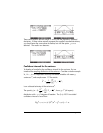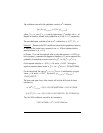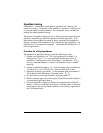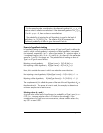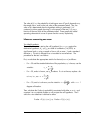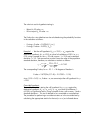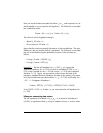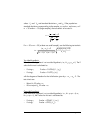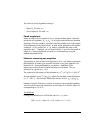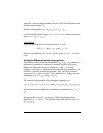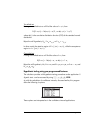
Page 18-36
Errors in hypothesis testing
In hypothesis testing we use the terms errors of Type I and Type II to define the
cases in which a true hypothesis is rejected or a false hypothesis is accepted
(not rejected), respectively. Let T = value of test statistic, R = rejection region, A
= acceptance region, thus, R∩A = ∅, and R∪A = Ω, where Ω = the parameter
space for T, and ∅ = the empty set. The probabilities of making an error of
Type I or of Type II are as follows:
Rejecting a true hypothesis, Pr[Type I error] = Pr[T∈R|H
0
] = α
Not rejecting a false hypothesis, Pr[Type II error] = Pr[T∈A|H
1
] = β
Now, let's consider the cases in which we make the correct decision:
Not rejecting a true hypothesis, Pr[Not(Type I error)] = Pr[T∈A|H
0
] = 1 - α
Rejecting a false hypothesis, Pr[Not(Type II error)] = Pr [T∈R|H
1
] = 1 - β
The complement of β is called the power of the test of the null hypothesis H
0
vs.
the alternative H
1
. The power of a test is used, for example, to determine a
minimum sample size to restrict errors.
Selecting values of α and β
A typical value of the level of significance (or probability of Type I error) is α =
0.05, (i.e., incorrect rejection once in 20 times on the average). If the
consequences of a Type I error are more serious, choose smaller values of α,
say 0.01 or even 0.001.
Notes:
1. For the example under consideration, the alternate hypothesis H
1
: μ
1
-μ
2
≠ 0
produces what is called a two-tailed test. If the alternate hypothesis is H
1
: μ
1
-μ
2
> 0 or H
1
: μ
1
-μ
2
< 0, then we have a one-tailed test.
2. The probability of rejecting the null hypothesis is equal to the level of
significance, i.e., Pr[T∈R|H
0
]=α. The notation Pr[A|B] represents the
conditional probability of event A given that event B occurs.



